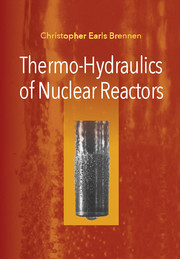4 - Some Reactor Designs
Published online by Cambridge University Press: 05 April 2016
Summary
Introduction
Discussions of current and future nuclear reactor designs utilize a convenient international notation based on the decades in which the designs originated. Thus Generation I reactors refer to early prototype reactors designed and built in the 1950s and early 1960s.Generation II reactors are those designed and built in the 1970s and 1980s and therefore include most of the commercial power generating reactors in operation today. Generation III reactors from the late 1990s, 2000s, and 2010s are few in number and can be characterized as advanced LWRs, evolutionary designs offering improved economics. Generation IV reactors refer to those that might be possible, given the focus of current research and development exploration. This chapter devoted to reactor designs focuses primarily on Generations II and IV.
As illustrated in Figure 4.1, a nuclear power plant is similar to any other coal, gas, or oil-fired plant, except that the source of the heat creating the steam that drives the steam turbines and therefore the electrical generators is the nuclear reactor core rather than the fossil fuel furnace. The focus in this text is on that core, known as the nuclear steam supply system or NSSS. It is assumed that the reader is familiar with the rest of the equipment (known as the balance of plant).
Before proceeding with further analysis, it is useful to provide some engineering context by briefly describing the design and components of current Generation II reactors. Consequently, the focus of the first part of this chapter is on Generation II reactors and those designs used in commercial power generating reactors in operation today. The last sections briefly describe some of the ideas being explored as Generation IV reactors.
Current Nuclear Reactors
Typical data on some of the principal types of Generation II reactors are listed in Table 4.1.These differ primarily in terms of the nuclear fuel being utilized and therefore the nuclear fuel cycle involved (see Section 2.2), and this distinguishes the LWRs from the HWRs and the FBRs. The two LWR types are then distinguished by the strategy used to handle the possibility of the cooling water boiling and therefore by the pressure of the primary cooling water system and the corresponding safety systems. Each of these features is a focus in the sections that follow.
- Type
- Chapter
- Information
- Thermo-Hydraulics of Nuclear Reactors , pp. 56 - 77Publisher: Cambridge University PressPrint publication year: 2016



